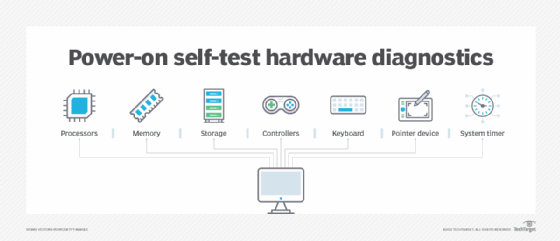beep code
What is beep code?
A beep code is the audio signal from a computer when it first powers on to give the Power-On Self-Test (POST) result. Typically, one short beep means that it passed the test successfully or a series of beeps means that something is wrong with the computer hardware. The location of the hardware fault is given by the pattern of the beeps. It may also be called the POST code.
When a computer powers on, the motherboard BIOS or UEFI performs a short test called POST. The POST determines if the hardware is complete and healthy enough to begin running more complicated code on the CPU and start showing an output on the screen. If it passes the test, the computer will usually emit one short beep and continue with the remainder of the boot sequence. Sometimes if the computer passes the vital tests but fails a minor one, such as having no keyboard or a missing case fan, the computer will emit a long beep and display an error but allow the boot to continue.
If the computer fails a major part of the POST, it may not be able to output a video signal to the screen. To alert the user and to indicate where it detected the problem, it will emit a patterned series of beeps. These beeps are similar to Morse code, hence the term beep code. Most computers will use a series consisting of short and long beeps with a long pause to indicate the end of the sequence. Sometimes the front power LED will flash in the same pattern. The location of the hardware fault can be determined by counting the beeps and consulting a data table provided by the manufacturer.

How to troubleshoot a beep code
A beep code indicates that there is something wrong with the computer hardware. If anything was recently added or removed from the computer, more than likely the problem is with the new component. Removing or reseating the new hardware will typically resolve the issue.
If nothing was recently changed with the computer hardware, the beep code will be more difficult to troubleshoot. It is recommended to check for signs of damage such as burn marks or the smell of smoke before trying again. If there is no obvious damage, count the number and pattern of beeps in the beep code. Consult the motherboard BIOS documentation for the list of beep code meanings.
Items that may cause a beep code include the following:
Manufacturer beep codes
Some manufacturer beep codes include the following:
- Dell Desktop Beep Codes.
- Dell Laptop Beep Codes.
- HP Desktop Beep Codes.
- ASUS Motherboard Beep Codes.
- Intel server motherboards may have additional beeps during startup that do not indicate an error.
See CompTIA troubleshooting steps and solving common computer problems.
